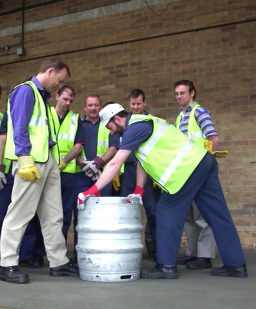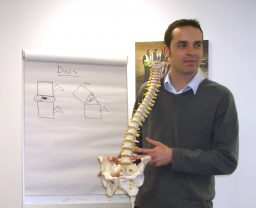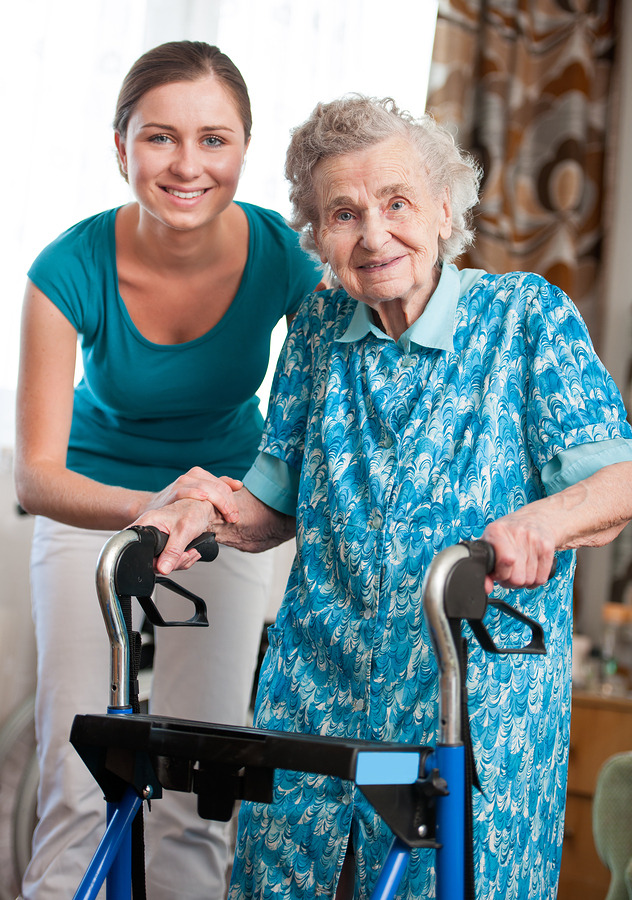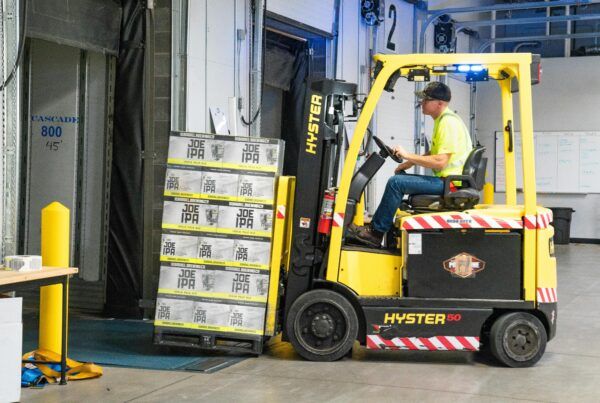Make your manual handling courses more engaging by refreshing your training methods.
Let’s face it: The mention of “Manual Handling training” is hardly likely to instil joy in the hearts of your employees. So how can you make your training courses more engaging?
What is the essential ingredient of a stimulating training session that engages participants in enjoyable learning?
How can you ensure the tutorial stays with them long after the instructor has bid farewell?
These are questions that Osteopaths For Industry (OFI) consultants and trainers, each a qualified osteopath or physiotherapist, have focused on during more than 20 years of delivering high quality training for the prevention of musculoskeletal injury in the workplace.
If your training method is to have delegates sit in silence while digesting a multitude of information being droned at them, then it’s no wonder that boredom levels rise, distracting thoughts take over, and the effectiveness of the health & safety message inevitably falls away. It’s vital, therefore, to make sure that your manual handling training sessions are as dynamic, fun and engaging as possible.
We believe variety is the spice of life and also the key to creating engaging training sessions that seize the attention of your workforce, encourage involvement and boost valuable information retention.
Read on for some hints and tips from our expert trainers…

Get your delegates involved.
- An instructor must turn attendees into active participants
Remember your school days when you felt disengaged from the tedious lesson and languished silently at the back? Learn from this as an instructor, and reach out to your audience. Engage with them so that they feel they can, and want to, actively participate. A good instructor will realise that even if they possess the velvet voice of Richard Burton, a long talking-to and dry lesson can cause many people to doze off and drift away.
Learners better assimilate information and best practice by absorbing real-life examples, being encouraged to participate in activities and giving feedback on crucial points. By mixing up training methods the session becomes a collective learning experience, in which all expressed views are valued.
As the famous proverb says: “Tell me and I’ll forget; show me and I may remember; involve me and I’ll understand.”
- Use multiple media to appease diverse learning preferences
How can you engage as wide an audience as possible? By using a mix of training materials to meet a diverse range of learning preferences. Remember that while you are talking to a group, you are also trying to engage each participant as an individual. People differ in their preferred way of receiving information. At OFI we use a range of PowerPoints and print handouts developed using the latest HSE guidelines, university research and journal studies to provide breaks in the spoken presentation.
Our instructors have found this gives participants time to peruse data and practical guidelines that support the content of the training session, and stimulates the desire for further reading. Powerpoints and infographics are excellent media for visualising complex data and case studies in an easily digested format that conveys a clear, jargon-free message.
We have also found participants respond favourably to having one of our ‘back care’ health promotion stands in the break area during a training session, where they can peruse our training support literature at their leisure and discuss it with one another over coffee.

Role-playing and active demonstrations help to bring your message home and aid knowledge retention.
- Role-playing demonstrates best practice and strengthens involvement
Our physical therapy instructors excel at demonstrating ‘real life’ examples of injuries during our manual handling training, illustrating through demonstrations with props the poor techniques that lead to tissue stress and damage. Engaging your participants with tactile demonstrations, while teaching good practice by getting them off their seats and into role-playing scenarios, reinforces the ‘how’ and ‘why’ connection that ensures lessons are fully understood, absorbed and remembered.
If your participants are seated for too long they will naturally become bored and disengaged. Get your participants up and on their feet and have them step into the shoes of someone following the correct procedures. This way they have experienced doing the right techniques, rather than merely hearing about them. Your trainees will then find it easier to re-enact the techniques in their daily work activity. This also better enables them as learners to become tutors for future new personnel.

OFI Manual Handling Trainer, Laurence Jones, teaches a course with the aid of a model spine.
- Combine Various Teaching Approaches & Tools
Over the many years of training Manual Handling Practical Skills, OFI has noticed that for every new subject area we introduce in our teaching sessions, or for every time we switch to a new activity, the level of the attendees’ focus increases. It’s about combining and contrasting different teaching styles, whilst maintaining the flow of training sessions, making them more dynamic and interesting.
Research supports this approach with studies revealing that people’s preferred learning styles can vary significantly. Some people understand or retain information better when watching a presentation, others when taking notes or by being actively/physically involved in the learning process. For any one group of attendees there will inevitably be a mix of these preferences, so this is another very good reason for providing a variety of learning styles.
OFI’s Senior Manual Handling Instructor, Laurence Jones says: “A large amount of H&S training is likened to ‘death by PowerPoint’. The OFI Course Development Team concluded long ago that this approach is not adequate; the majority of people have a learning preference towards ‘watching & doing’ rather than ‘listening & reading’. To make training effective, I think it’s essential to identify these preferences and adapt the training to suit the delegates.”

Ensure your delegates put their learning in to practice, and review them regularly to confirm that correct technique is being maintained.
- Don’t delay putting learning into action
Even the best training sessions require their learning to be put into practice shortly after the session to ensure the lessons remain fresh in the minds of the participants. As an instructor, take the time to look at the techniques being used by your workforce in the weeks after your training session to ensure your guidance is informing practice within your company. It is also a good idea to have materials on prominent display within your premises so that trainees can refresh their knowledge if necessary.
OFI finds organising a refresher seminar, for example one of our ‘Lunch-time Stretch’ workshops, in the months following the training session stimulates re-engagement with teaching materials and compels trainees to evaluate how effectively they are putting what they learned into practice within the workplace.
To summarise
What makes a training session efficient isn’t only a high level of retention of the material, but when attendees take joy in participating in the training and don’t consider it time wasted. For such results, engagement is essential and, in our experience, engagement is achieved when these techniques are incorporated into the delivery of the training.
In both of our ‘Direct to the Workforce’ or ‘Train the Instructor’ courses, using mixed training methods is a technique we wholeheartedly embrace, teach and implement when providing musculoskeletal injury prevention training.
In this blog series, our expert trainers share their experience and show you how to make your manual handling courses more engaging.
Articles within this series will be published bi-monthly from January 2015. Subscribe to our email newsletter to stay informed.
- Introduction (Advice for Manual Handling trainers – How to make your courses more engaging).
- Tailor your course to fit your audience.
- Apply the ‘Stages of Change’ model to your training.
- Make your course material engaging & mix up your training methods. (this page)
- Personalise your training with anecdotes and case studies.
- Explain the ‘why’ behind the ‘how’.
- Make ‘practical’ a key component of your training.
- Follow up your training with feedback and course evaluation.








